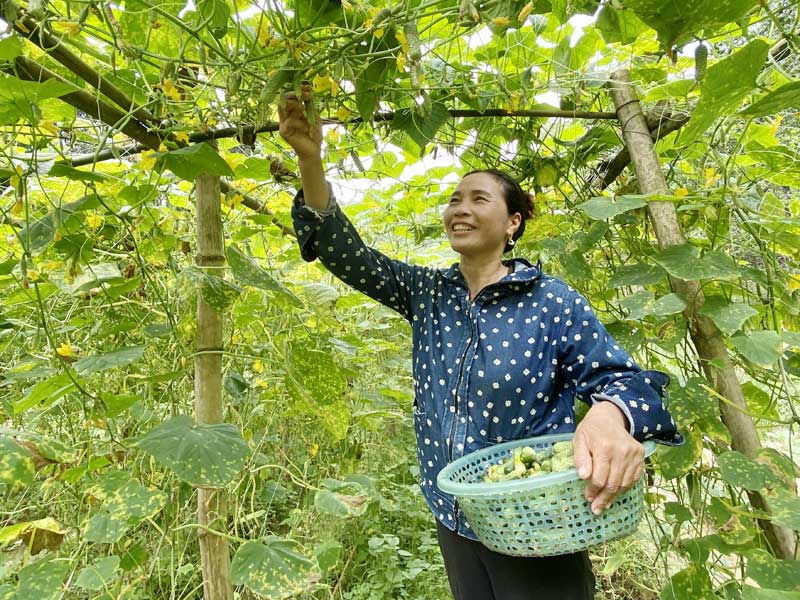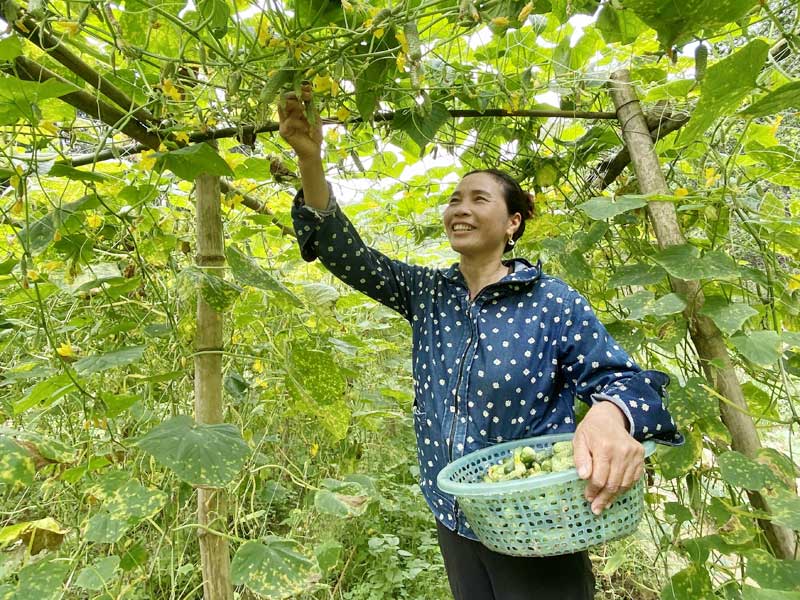


 Farmers in Vo village,
Thong Nhat commune (Lac Thuy district), grow gherkins under their contracts
with the company, reaping high economic benefits.
Farmers in Vo village,
Thong Nhat commune (Lac Thuy district), grow gherkins under their contracts
with the company, reaping high economic benefits.
The 2020 spring-summer crop is the second time Tran Thi Hang, head of Vo village in Thong Nhat commune, planting gherkins. Bui Van Thinh in Hung Thi commune’s Thung Voi village has joined the model under a contract signed with Hagimex JSG.
According to the contract, the prices paid by the company for local gherkins will be unchanged throughout a crop, ranging between 2,000 – 11,000 VND per fruit depending on their post-harvest categories.
Nguyen Tien Anh, director of Hagimex JSG, said the Hagimex JSG plant, located in the Bien Hoa industrial cluster in Kim Bang district, Ha Nam province, is among the most invested ones for processing gherkins, tomatoes, and spices in the North.
He unveiled that the shipments of canned gherkins to the Netherlands, Russia, Germany, the US, Japan and the Republic of Korea earned more than 50 percent of the firm’s total revenue. To expand its supply sources, Hagimex JSG has implemented the cooperation model in Lac Thuy, he said.
Under the model, farmers receive seeds and insecticides in advance, returning the cost to the company within 30 days after the crop ends. The sides sign a contract that ensure growers a good ceiling price and on time payment.
The model is proved effective, as the fruit is suitable to land at local rice fields, needs low production cost, and can be harvested in 35 – 40 days on average, with harvest duration lasting up to 50 days. Each hectare of gherkin plantation earned its growers 120 million per crop on average. Local farmers can plant three crops a year. To date, 14 households in Khoan Du, Thong Nhat, and Hung Thi have already participated in the model, with their plantations spanning 1.4 hectares./.